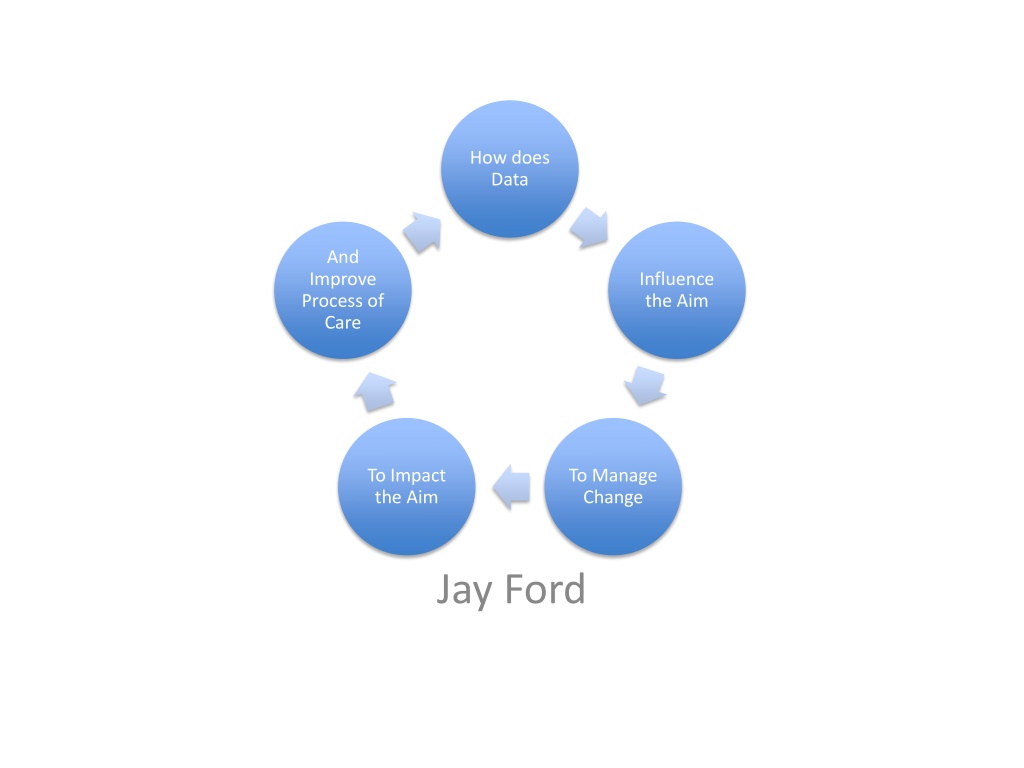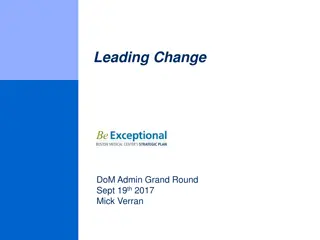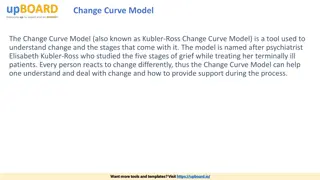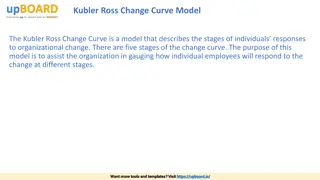Understanding the Influence of Data on Managing Change in Healthcare
Explore how data and the improvement process of care impact the management of change in healthcare settings. Discover the importance of data framework, rapid cycle testing, measuring the impact of change, and essential steps for effective data utilization to drive project improvement goals and outcomes.
Download Presentation

Please find below an Image/Link to download the presentation.
The content on the website is provided AS IS for your information and personal use only. It may not be sold, licensed, or shared on other websites without obtaining consent from the author. Download presentation by click this link. If you encounter any issues during the download, it is possible that the publisher has removed the file from their server.
E N D
Presentation Transcript
How does Data And Improve Process of Care Influence the Aim To Impact the Aim To Manage Change Jay Ford
Some is not a number, soon is not a time. -- Don Berwick, MD
Data Framework What data is important Make Key Decisions Provide Comparisons Identify Gaps/Problems Assess direction Measure impact of change Who uses this data? How is this data utilized?
WHY IS THIS IMPORTANT? Principle #5 - Rapid Cycle Testing What are we trying to accomplish? How will we know a change is an improvement? What changes can we test that will result in an improvement?
Data directs the action steps toward a change project improvement goal.
A Step Process for 6 Measuring the Impact of Change
6 Steps for Measuring the Impact of Change 1 2 3 DEFINE YOUR AIM & MEASURES COLLECT BASELINE DATA ESTABLISH A CLEAR GOAL 4 5 6 Always ask why. CONSISTENTLY COLLECT DATA CHART YOUR PROGRESS ASK QUESTIONS
2. Collect baseline data. Never start a change project without it. QUESTIONS TO ASK: A.Was the data defined to ensure that we collect exactly the information needed? B.How accurate is the data? Does accuracy matter? C.Does the process ensure that the measures will be collected consistently? D.Do trade-offs exist? Is quality more important than the time required to collect data?
3. Establish a clear goal. A goal should: - Be realistic yet ambitious - Be linked to project objectives - Avoid confusion This ensures that the results are interpretable and accepted within the organization.
What are your aims? Big A (for aim) Reduce readmissions Little A (for aim) Intermediate measure
Cycle Measures Cycle Measures: examine incremental impact of the PDSA change cycle Two scenarios No shows Transitions between levels of care
Cycle Measures No Shows Number of Missing Phone Numbers Number of Connected Calls Number of calls required % of persons called who come the next day
Cycle Measures - Transfers Scheduled appointment within 48 hours of discharge Number of Calls required Number of Days between Discharge and Admission Number of clients offered to attend pre-discharge OP session Number of clients actually attending
4. Consistently collect data. As a team, decide: Who will collect the data? How will they collect it? Where will the data be stored? Regular data collection is a crucial part of the change process.
Keep data collection and reporting as simple as possible, but be specific.
5. Chart your progress. Share pre-change (baseline) and post-change data with: - Change Team - Executive Sponsor - Others in the organization Use visual aids for sharing data. Line graph
A simple line graph example Remember: One graph, one message.
6. Ask questions. What is the information telling me about change in my organization? Why was one change successful and another unsuccessful? Always ask why.

























